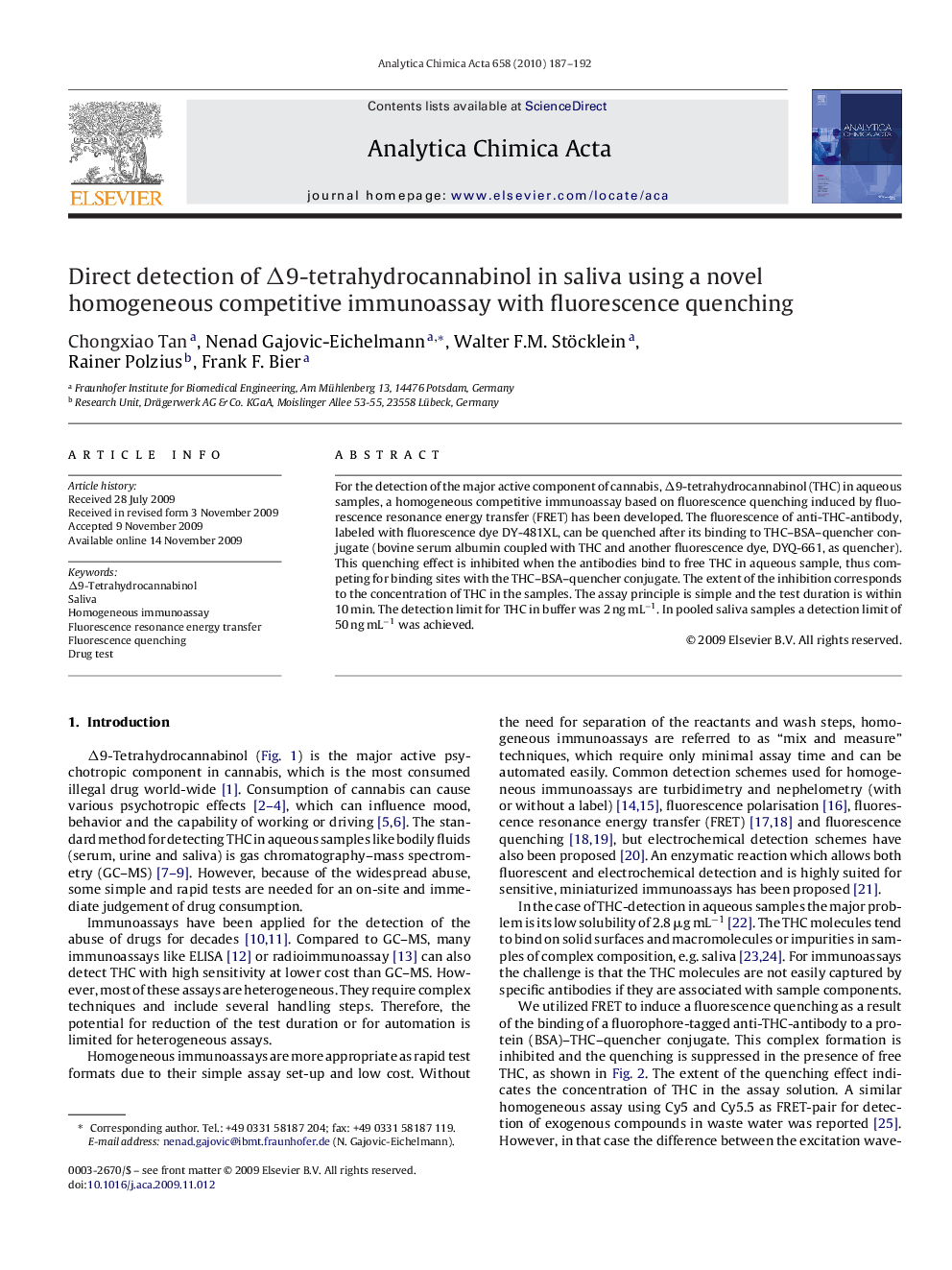| Article ID | Journal | Published Year | Pages | File Type |
|---|---|---|---|---|
| 1167618 | Analytica Chimica Acta | 2010 | 6 Pages |
For the detection of the major active component of cannabis, Δ9-tetrahydrocannabinol (THC) in aqueous samples, a homogeneous competitive immunoassay based on fluorescence quenching induced by fluorescence resonance energy transfer (FRET) has been developed. The fluorescence of anti-THC-antibody, labeled with fluorescence dye DY-481XL, can be quenched after its binding to THC–BSA–quencher conjugate (bovine serum albumin coupled with THC and another fluorescence dye, DYQ-661, as quencher). This quenching effect is inhibited when the antibodies bind to free THC in aqueous sample, thus competing for binding sites with the THC–BSA–quencher conjugate. The extent of the inhibition corresponds to the concentration of THC in the samples. The assay principle is simple and the test duration is within 10 min. The detection limit for THC in buffer was 2 ng mL−1. In pooled saliva samples a detection limit of 50 ng mL−1 was achieved.
